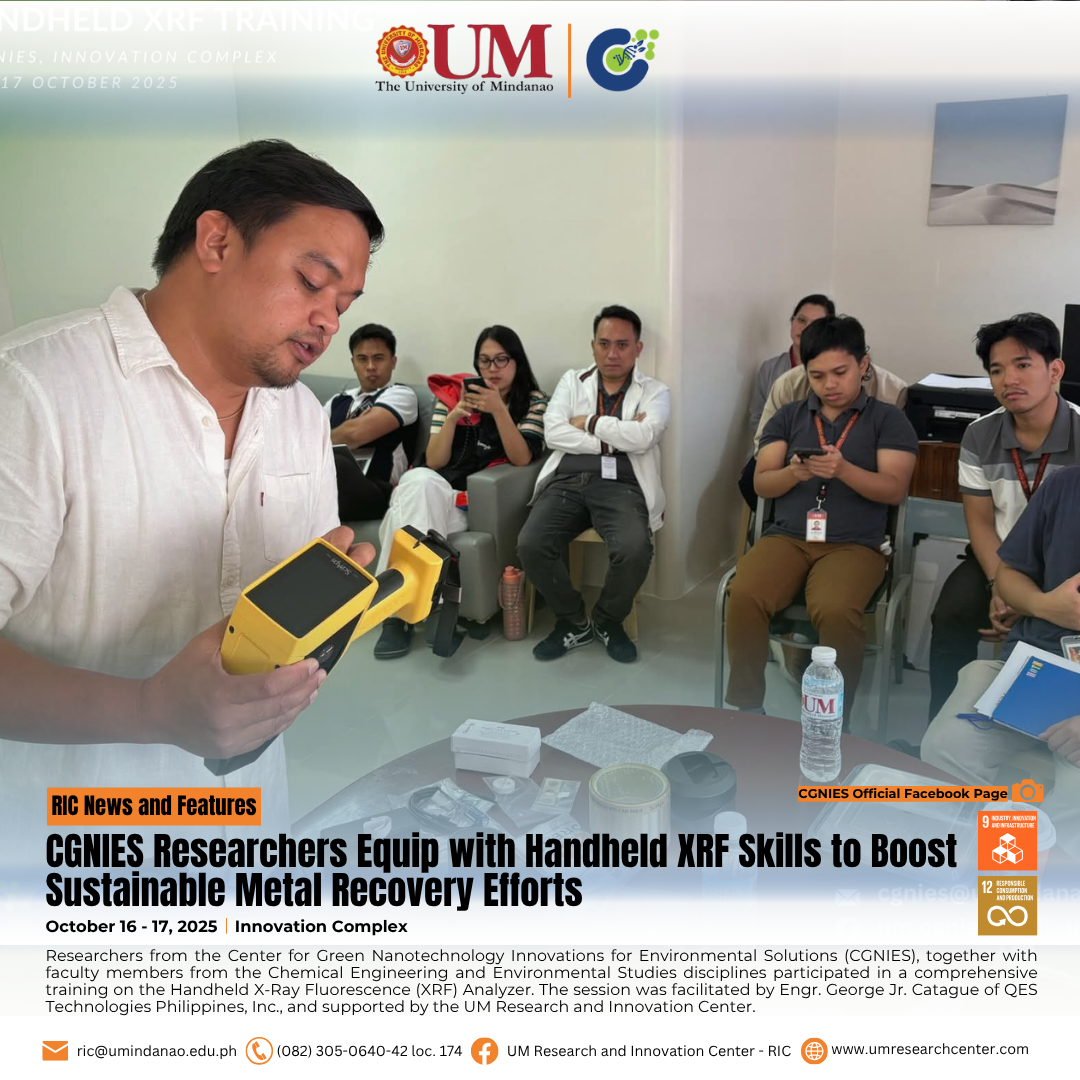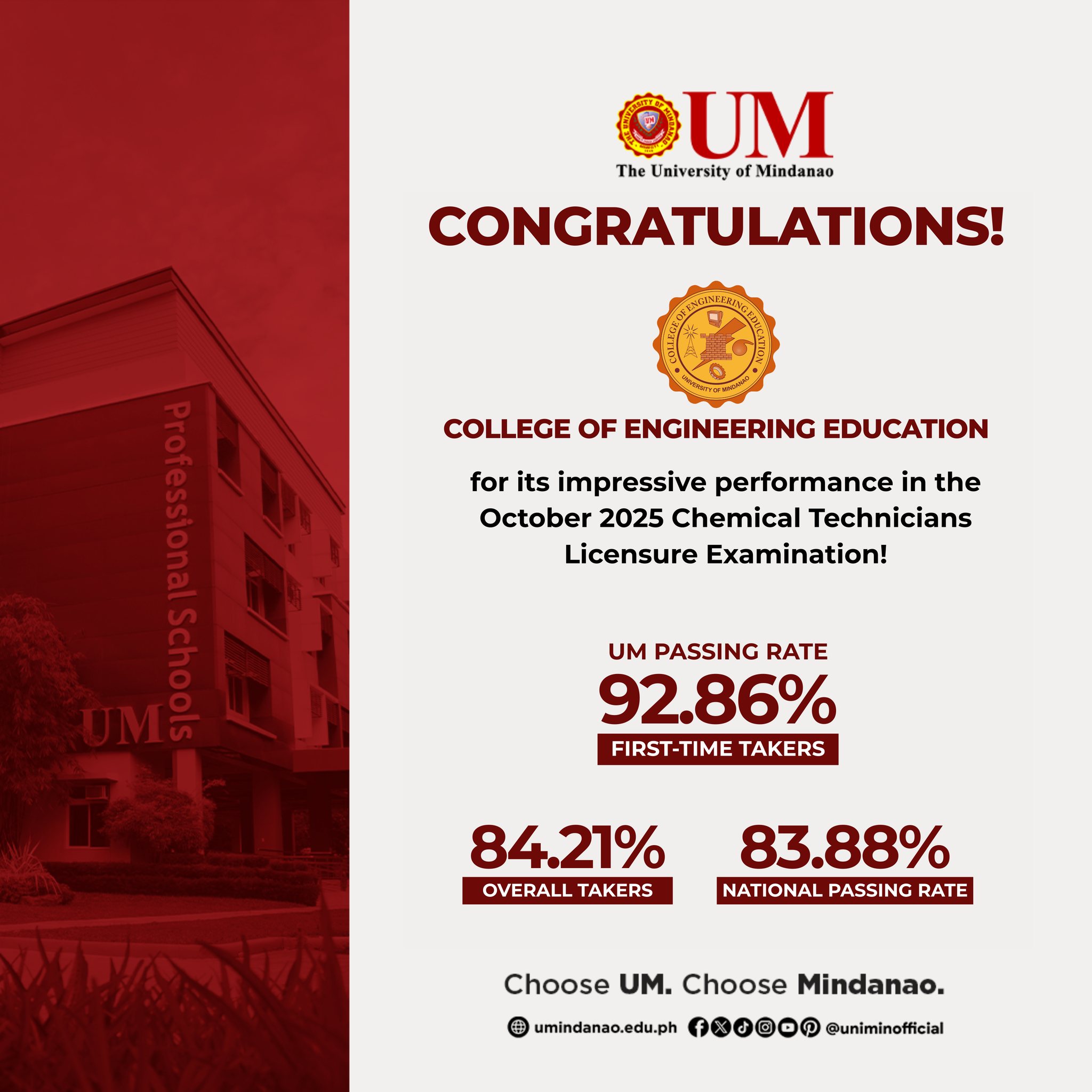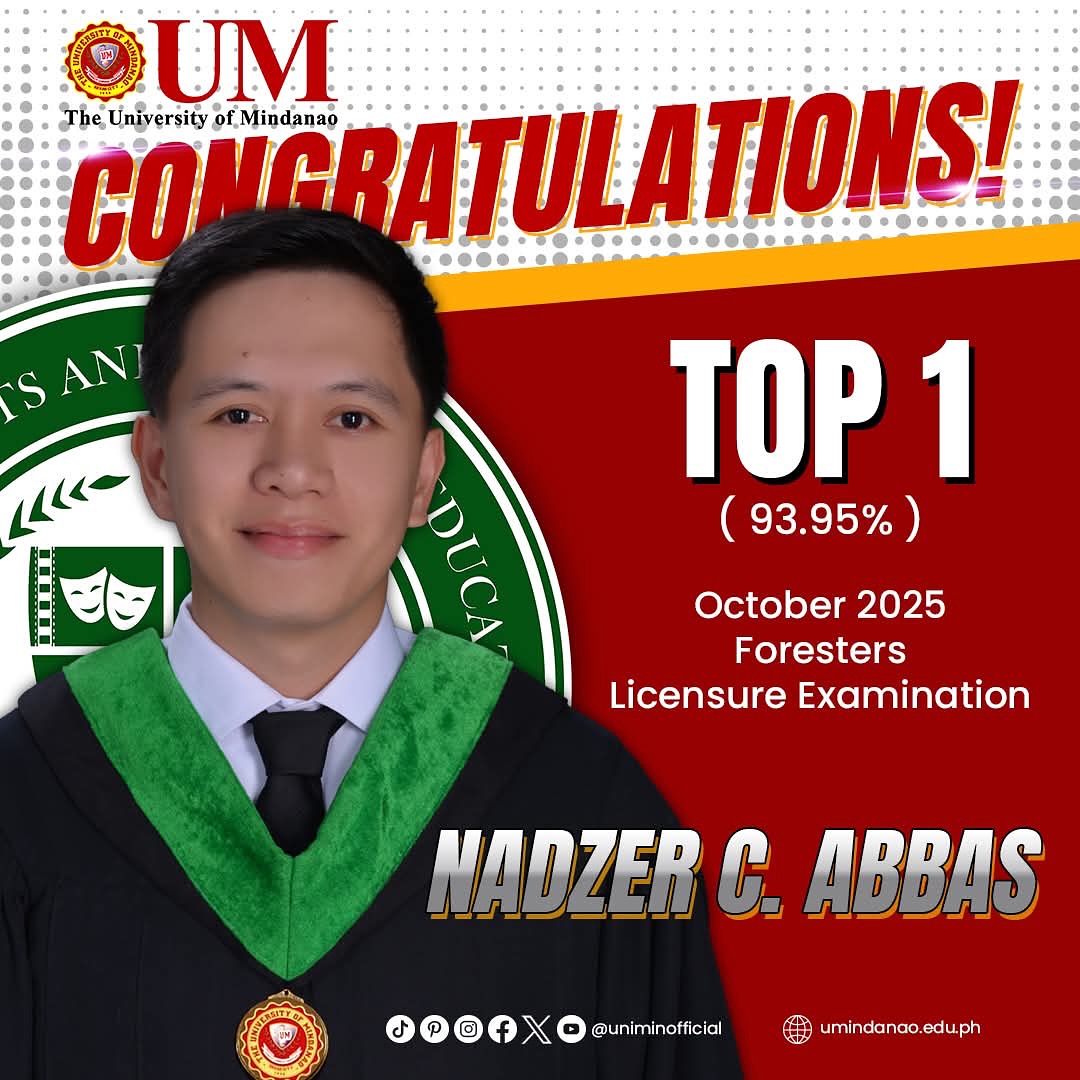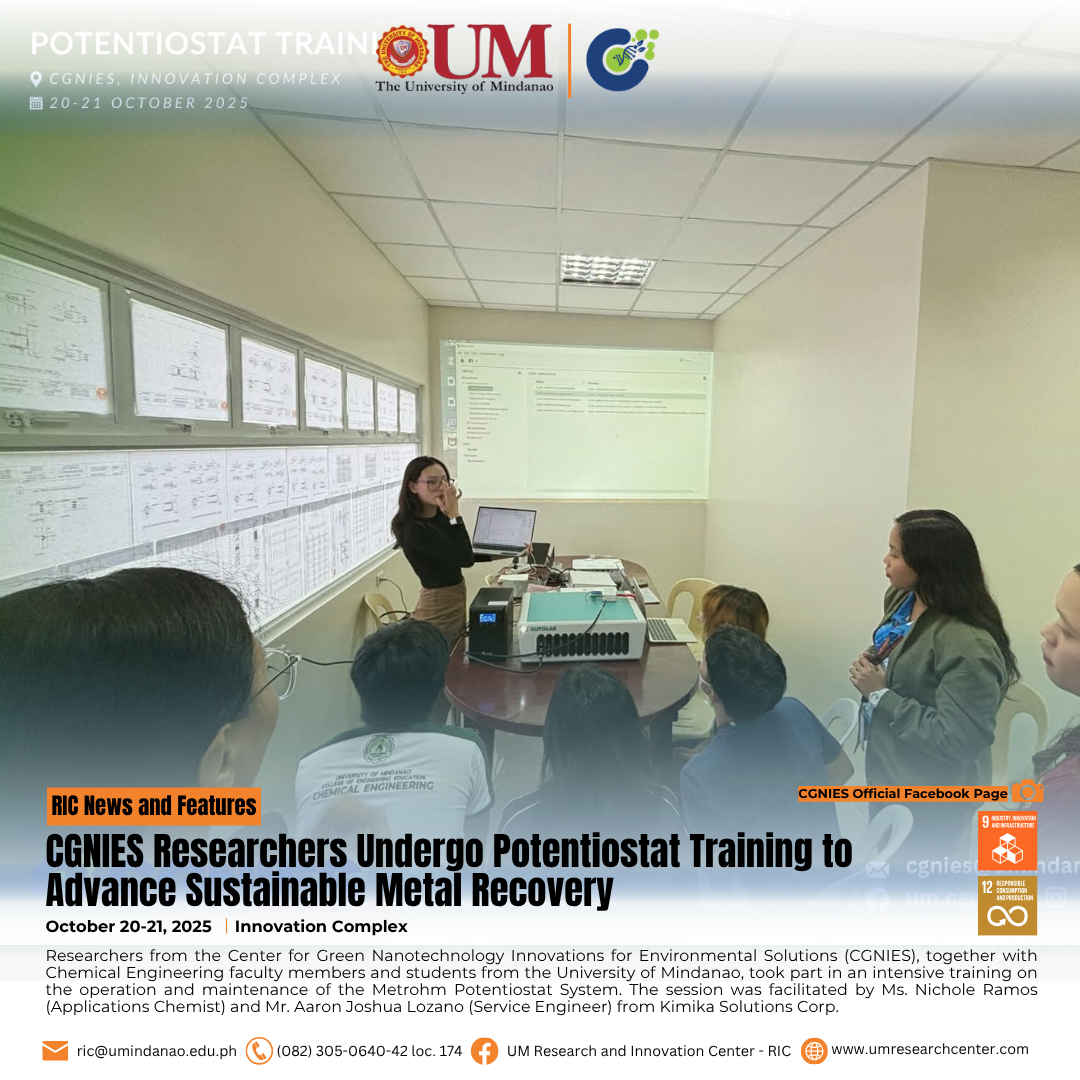CGNIES Researchers Equip with Handheld XRF Skills to Boost Sustainable Metal Recovery Efforts
Researchers from the Center for Green Nanotechnology Innovations for Environmental Solutions (CGNIES), together with faculty members from the Chemical Engineering and Environmental Studies disciplines of the University of Mindanao, participated in a comprehensive training last October 16-17, 2025 on the Handheld X-Ray Fluorescence (XRF) Analyzer. The session was facilitated by Engr. George Jr. Catague of QES Technologies Philippines, Inc., and supported by the UM Research and Innovation Center (RIC).
The training provided participants with a solid grounding in the theoretical principles and mechanisms of X-ray fluorescence, detailed the key components and operational procedures of the Handheld XRF unit, and culminated in an actual hands-on demonstration. This learning experience was especially valuable for faculty and student researchers engaged in materials characterization and resource recovery research.
The Handheld XRF Analyzer is a key instrument in the MetaEco Project, functioning as a non-destructive analytical tool that enables the rapid identification and quantification of metal elements—including lithium (Li), nickel (Ni), cobalt (Co), and manganese (Mn)—from spent electric vehicle (EV) batteries. Its application ensures accurate metal profiling, supporting the design and operation of a continuous electrochemical system for sustainable metal recovery.
This initiative reflects the University of Mindanao’s dedication to advancing research aligned with Sustainable Development Goal (SDG) 9: Industry, Innovation, and Infrastructure, and SDG 12: Responsible Consumption and Production. By harnessing advanced analytical technologies such as the Handheld XRF, UM continues to champion sustainable innovation, environmental stewardship, and technological advancement in support of a circular and resource-efficient economy.
Share this article:

_1.png)
_2.png)



.png)
.png)
